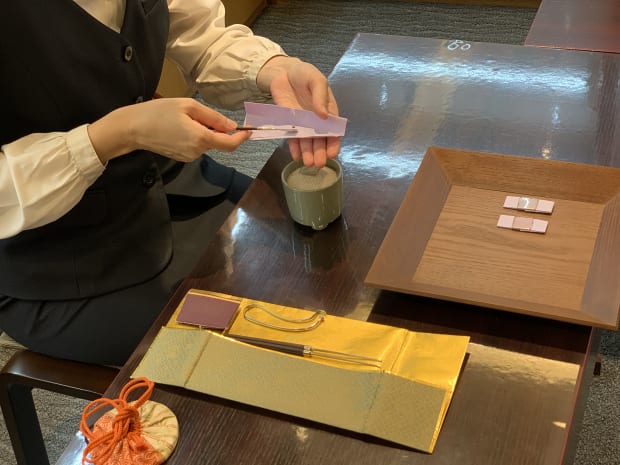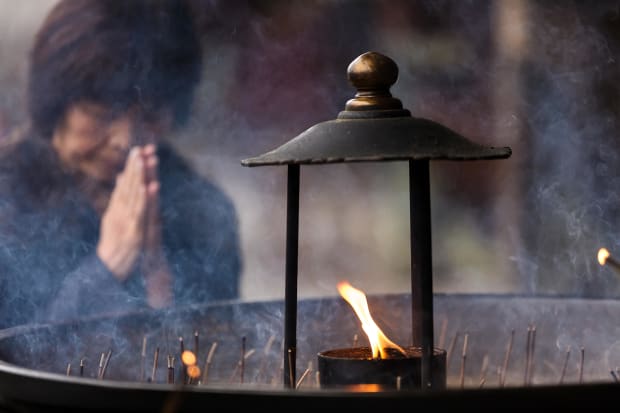Incense, brought to Japan with Buddhism in the 6th century, creates a spiritual connection to the gods and sanctifies a space. Its scent is a sure sign you are near a temple or a shrine.
It’s said to take 30 years to become a kodo master and the trick, it seems, is to sharpen the mind and appreciate the fragrance, not just smell it. But how hard can that be?
In a tatami-mat room at Yamadamatsu Incense Wood company in Kyoto, just west of the Imperial Palace, Nae Anri sets out the tools she will use for my challenge.

There’s a small censer containing a hot coal buried in ash; a fabric pouch tied with a braided bow in the shape of a lotus; and a folder of gold card containing seven metal instruments, scrupulously cleaned.
In a series of delicate and precise moves, Anri shapes the ash into a mound, using a feather to brush dust from the inside of the censer. In the pouch are three tiny chips of wood wrapped in paper: we are going to use these to play a game called Monko, using three varieties of incense wood (more complex games use up to 10).

Japanese incense uses resinated woods like agarwood and sandalwood. It’s less smoky than other Asian varieties and has no bamboo stick in its centre. The most treasured material is the rare and expensive kyara from the forests of Vietnam.
Anri takes out a tiny sheet of glass-like mica, a silicate mineral edged with silver, and places a wood chip onto it with tweezers before sitting it on top of the warm ash.
It turns out I’ve over-thought it: they were all the same (“dew on silver grass”).
The scent of the raw wood is too subtle for me. It’s a lesson in itself, of course: the enigmatic but evocative sense of smell is one that must be cultivated and educated. Those ancient nobles had a lot of free time, it seems.
NEED TO KNOW
Yamadamatsu, 64 Kageyukojicho, Kamigyo Ward, Kyoto. You can also play Monko at other stores.












